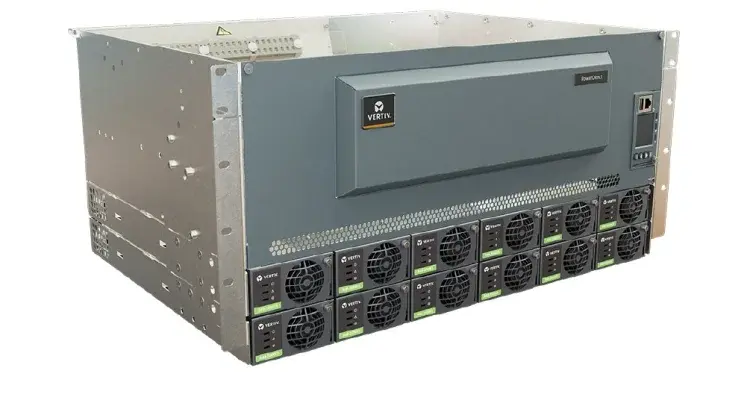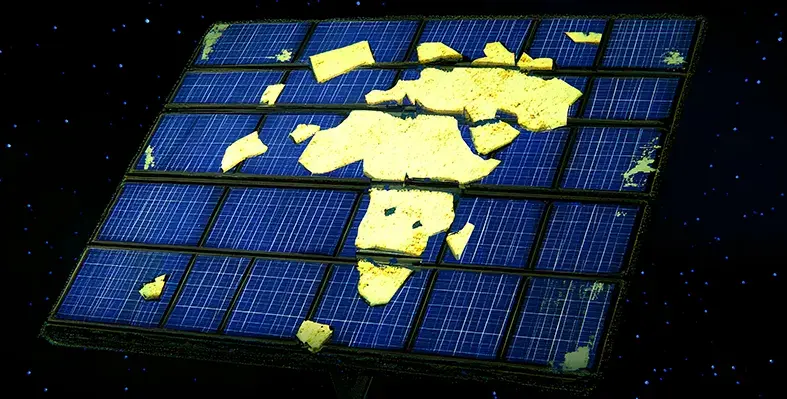When broadcasters began co-habiting with the computer industry in the late 1960s, it was evident that both parties were risking their long-term sanity if not their health. First came a wholesale shift from analogue to digital signal processing, then a switch from tape-based to file-based post-production and playout, next a flurry of new high-definition standards, and now...
p>When broadcasters began co-habiting with the computer industry in the late 1960s, it was evident that both parties were risking their long-term sanity if not their health. First came a wholesale shift from analogue to digital signal processing, then a switch from tape-based to file-based post-production and playout, next a flurry of new high-definition standards, and now...
3D. So who wants it? Well, the bosses of the big display screen manufacturers for a start. How else to keep their sales buoyant when demand for 2D LCDs approaches saturation? Subscription-base broadcasters also want it, to retain an edge over free-to-air channels. Upon this simple commercial basis the broadcast industry is now gearing itself to handle the depth dimension.
Unlike NAB 2009 where 3D exhibits were received by the majority of visitors with what is politely termed 'muted enthusiasm', this year the concept of making and broadcasting 3D content caught the interest and imagination not just of exhibitors but of potential customers. The question on many lips - "What about viewers who can't actually see in 3D?" - was easily handled: "Buy the kit and close one eye."
It has to be said that a lot of the 3D at NAB 2010 looked flat because producers imagine they can zoom into closeup without increasing left/right interocular spacing. This is an inherent limitation of Panasonic's otherwise very neat AG-3DA1, claimed to be the world fs first HD 3D ramcorder capturing to Secure Digital flash memory. A one-piece unit shown in prototype, the AG-3DA1 weighs under 3 kg and is equipped with dual lenses plus two 1920 x 1080 2.07 megapixel 3-MOS imagers to record 1080/60i, 50i, 30p, 25p and 24p (native) and 720/60p and 50p in AVCHD. It can record for up to 180 minutes on dual 32 GB Secure Digital cards in Panasonic fs AVCHD PH mode. Features include dual HD-SDI out, HDMI (version 1.4), two XLR connectors, built-in stereo microphone and twin-lens camera remotes. Apart from a minor tracking delay on the right-hand size of two prototypes I tried, it is a great product in every respect (available Q3 at around $21,000) except that 3D zooming really does need the spacing of the two cameras to be increased.
3ality demonstrated an interesting solution to this problem. One of its 3D pair cameras can be adjusted laterally to increase the effective interocular distance as the cameraman zooms into close-up, and to decrease it during pullback. Works fine but would benefit from automation.
A very large LED screen on the Sony booth relayed extracts from some very well-made 3D productions and a breathtaking 3D animation, all viewed through disposable/retainable cardboard passive polarising nose-wear. Sony introduced the PMW-320 shoulder-mount ramcorder which incorporates three 1/2 inch-type HD CMOS sensors and offers the features of the PMW-EX1R plus enhancements such as a scene file system and four-channel audio. A PMW-320K version is supplied with a Fujinon HD lens. The PMW-320 supports multiple frame rate recording such as 59.94i, 50i, and native 23.98P and 25P as well as being 1080i/720P switchable. There is also a choice of a 35 Mbit/s high quality mode, 25 Mbit/s HDV 1080i compatible mode and 25 Mbit/s SD DVCAM recording. Twin memory card slots support up to 280 minutes HD recording time using two 32GB SxS memory cards.
No sign at NAB of the single-zoom-lens 3D camera promoted by Sony as a technology concept at a 2009 show in Japan. This was unusual in implying that a stereo image pair could be delivered through a single optical barrel.
Polecam demonstrated the use of prime lenses and moving the cameras towards the subject rather than zooming into close-up. The Polecam live 3D technique consists of two Toshiba IK-HD1 ultra-compact HD cameras mounted side by side on a 3D Head feeding two camera control units mounted at the base of the rig. Each CCU sends HD-SDI to an Inition StereoBrain creating an integrated 3D signal which is then fed to a stereoscopic display. The monitor employed at NAB was a 46 inch JVC GD-463D10 LCD screen using Xpol circular polarization for natural 3D reproduction. "Using prime lenses gives us massive depth of field," claimed Greg Salman of Polecam USA. "If 3D producers choose to deploy zoom lenses, these need tracking and racking which in turn requires a much bigger, more complicated and more expensive rig. Using the Polecam system, the boom is the zoom. Our side-by-side system is compact and lightweight, giving great creative freedom. With the cameras spaced at about 40 mm interocular distance, we delivered solid 3D from foreground content right through to the far depths of the Central Hall with no need for intermediate adjustments. We achieved such high realism that you could easily imagine you were looking in a mirror. And the costs we are talking about are way below the competition."
Harris collaborated with Madison Square Garden for the first-ever network hockey telecast produced in 3D (Rangers vs. Islanders, March 24). Harris supplied NetVX encoders and a range of signal processing equipment used to ensure synchronous transport of the signals from Madison Square Garden to the network operations centre.
Quantel introducing what it claims is the world's first interactive 3D workflow with real-time convergence control. The company's 'Stereo3D' timeline allows each eye to be viewed and worked on individually or simultaneously. New tools were introduced to handle acquisition issues such as incorrect left/right colour balance and keystone distortion which results from converged shooting.
JVC's real-time 2D to 3D processor was showing better pictures than when introduced at NAB 2009. It works by allocating specific colours to different depths. A curious incidental effect is its tendency to make the entire display appear concave, at least to my eyes.
Interest in LED lighting is growing strongly not just for its energy efficiency but because it allows a wide range of colour effects hitherto impossible without resort to passive filters. Gekko Technology exhibited its new kezia 50 (tunable white) and 200 (full-colour) hard-source LED lights, both capable of operation under local or DMX control. The ability of kezia to generate high quality tunable whites reduces the need for multiple light sources as well as the need to gel the output. The kezia 50 is designed to match the output brightness of a 250 W tungsten lamp-head yet consumes only 50 W of electrical power. The kezia 200 has similar brightness to a 1 kW tungsten whilst consuming less than 200 W. The karesslite 6006 and karesslite 6012 Dual (daylight/tungsten switchable version) were also shown for the first time. Based on the 6 x 12 emitter 600 x 300 mm karesslite 6012, the karesslite 6006 incorporates a 6 x 6 emitter array measuring 300 x 300 mm. Power consumption is correspondingly halved to 45 W, allowing more than three hours of continuous operation from a single rear-mountable V-Lock battery.
iPadded
Several exhibitors demonstrated devices designed around Apple's new iPad touchscreen computer which looks likely to be integrated in quite a lot of equipment between now and IBC. Autocue-QTV demonstrated an iPad on-camera prompter, a companion product to the company's recently introduced iPhone prompter. Both are designed for use with prompting software available via Apple. Autocue-QTV additionally introduced a second generation version of its QMaster and QBox, IP-based prompting system. The new release includes pre-configured studio and field profiles, and full complex language handling. A new battery-powered wireless foot control and USB versions of the existing hand controllers were also demonstrated.
Trying the iPad at a Las Vegas Apple store completely removed my doubts about its value both as a writing tool and as an email and Web terminal. I joined the queue and bought one. Audio keyclicks (mutable) plus momentary shading on each pressed key make typing on a glass screen virtual keyboard almost as easy as the real thing. Unlike most laptops, the iPad doesn't force you to reach across several inches of plastic. It slips almost unnoticed into a briefcase or backpack and can be used at practically any angle. Its flat profile also overcomes the problem of trying to use a laptop behind an inclined aircraft seatback. $499 with wireless connectivity and 16 gigabytes of RAM.
Imec's 'virtual camera'
Imec, a Belgian research organsation, has worked out how to interpolate in real-time the viewpoint from an operator-guideable camera. Its iVC system interpolates the actual video output from multiple fixed real cameras pointing in from various locations and heights at the edge of the field. Five were used for the NAB demonstration. As well as allowing the viewpoint to 'fly' laterally and vertically between the source camera positions, the system allows the operator to zoom into close-up.
Retaining the Apple theme (though Apple has stopped exhibiting at NAB), Eyeheight introduced complianceSuiteFC, a set of plug-in software modules compatible with Apple Final Cut Studio and Final Cut Express. LegalEyesFC is a video legaliser plug-in offering composite, RGB and simultaneous composite-plus-RGB legalisation, all with user-adjustable soft clipping. legalEyesFC supports PAL and NTSC composite domains and Eyeheight's proprietary non-linear predictive filtering process which reduces the risks of content rejection. SafeEyesFC is safe-area generator and image measurement module which provides an extensive range of broadcast safe-area markers and pixel-accurate text height measurement for commercials compliance.
A vintage year
NAB attendance is always a useful gauge of the health of the overall broadcast business. Show attendance this year was nearly 6,000 up on NAB 2009 at over 88,000 registrants, many of whom actually turned up. NAB attendance tends to peak on Day One (Monday), trailing off until Day Four when exhibitors sometimes find themselves studying their competitors. This year's visitors seem to have stayed for the duration, judging both from the level of traffic in the huge Las Vegas Convention Centre and the condition of the front-of-venue car parks. The only stampede for the airport when Iceland's Eyjafjallajokull volcano began to disrupt Atlantic flights was me.
Beyond 3D LCD TV?
I thought you might ask that and think I have the answer: 3D OLED TV. TV Logic exhibited a working 3D OLED panel of almost zero thickness. Organic LEDs generate their own light so require no backlighting, meaning the front-to-back dimensions are just a (very) few millimetres. The company's screen doubled as a substrate supporting comparably thin processing chips bonded directly to the rear of the display.
Rod Melchurch






















